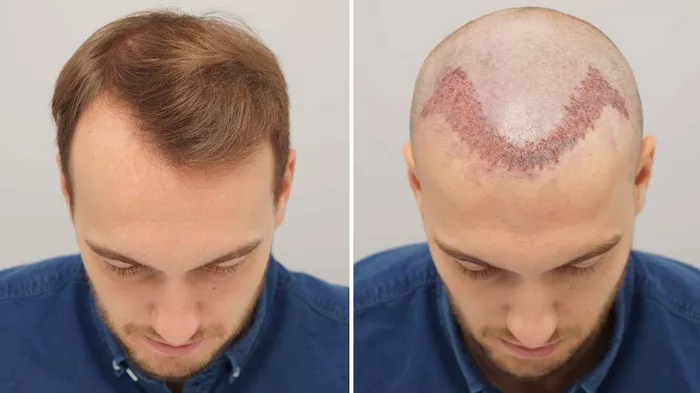Hair transplant surgery has become increasingly popular in recent years as a permanent solution for hair loss. However, despite its effectiveness in restoring lost hair, many individuals wonder whether they can still experience hair loss after undergoing such a procedure. This article delves into the intricacies of hair transplant surgery, addressing common concerns and providing insights into the possibility of hair loss post-transplant.
Understanding Hair Transplant Surgery
Before delving into the question of post-transplant hair loss, it’s crucial to understand how hair transplant surgery works. There are primarily two techniques used in hair transplantation: Follicular Unit Transplantation (FUT) and Follicular Unit Extraction (FUE).
In FUT, a strip of scalp containing healthy hair follicles is surgically removed from the donor area, typically at the back or sides of the head. The donor strip is then dissected into individual follicular units, which are subsequently implanted into the recipient area where hair loss has occurred.
On the other hand, FUE involves harvesting individual follicular units directly from the donor area using a small punch tool. These follicular units are then transplanted into the recipient area, mimicking the natural growth pattern of hair.
Both FUT and FUE procedures aim to redistribute healthy hair follicles to areas experiencing hair loss, resulting in natural-looking hair restoration.
Immediate Post-Transplant Shedding
One common phenomenon that occurs after a hair transplant is known as “shock loss” or immediate post-transplant shedding. This temporary shedding typically occurs within the first few weeks following the procedure and is completely normal.
During shock loss, the transplanted hairs, as well as some of the existing native hairs in the recipient area, may fall out. This can be alarming for patients, as it may appear as though the transplant has failed. However, it’s important to understand that this shedding is a natural part of the hair growth cycle and is often followed by regrowth of new, healthy hair.
The Transplanted Hair Growth Cycle
To understand the possibility of continued hair loss after a transplant, it’s essential to comprehend the natural hair growth cycle. Hair follicles go through three main stages:
1. Anagen Phase: This is the active growth phase, during which the hair follicle produces new hair. The duration of this phase varies depending on genetics and other factors but typically lasts for several years.
2. Catagen Phase: In this transitional phase, the hair follicle shrinks and detaches from the blood supply. This phase lasts for a few weeks.
3. Telogen Phase: Also known as the resting phase, during which the hair follicle remains dormant before eventually shedding the hair. This phase lasts for several months.
After a hair transplant, the transplanted hairs initially enter the telogen phase, leading to the temporary shedding mentioned earlier. Subsequently, new hairs begin to grow from the transplanted follicles, gradually transitioning through the anagen and catagen phases.
Factors Affecting Long-Term Results
While hair transplant surgery can provide permanent hair restoration for many individuals, several factors can influence the long-term outcome and potential for continued hair loss:
1. Genetics: Genetic predisposition plays a significant role in determining the pattern and extent of hair loss. While transplanted hairs are often resistant to the effects of DHT (dihydrotestosterone), the hormone responsible for male and female pattern baldness, native hairs in the recipient area may still be susceptible to hair loss over time.
2. Age: Age can impact the progression of hair loss, as well as the stability of transplanted hair follicles. Younger patients with active hair loss may require additional procedures in the future to address ongoing thinning and balding.
3. Underlying Medical Conditions: Certain medical conditions or hormonal imbalances can contribute to hair loss, both before and after a hair transplant. Managing these underlying issues is essential for maintaining the health of existing hair and maximizing the success of the transplant.
4. Lifestyle Factors: Factors such as stress, diet, and lifestyle choices can affect hair health and contribute to ongoing hair loss. Adopting a healthy lifestyle, managing stress levels, and following a balanced diet can promote optimal hair growth and minimize the risk of further hair loss.
5. Post-Transplant Care: Following proper post-transplant care instructions provided by the surgeon is crucial for ensuring successful results and minimizing the risk of complications. This includes avoiding strenuous activities, protecting the scalp from sun exposure, and adhering to any prescribed medications or treatments.
Managing Expectations and Planning for the Future
While hair transplant surgery can effectively restore lost hair and improve self-confidence, it’s essential for patients to have realistic expectations and understand that ongoing hair loss may occur, especially in areas outside the transplanted zone. Additionally, individuals considering a hair transplant should be prepared to undergo additional procedures in the future to address any further hair loss that may occur.
Consulting with a qualified and experienced hair transplant surgeon is the first step in understanding the potential risks and benefits of the procedure, as well as developing a personalized treatment plan tailored to individual needs and goals. By thoroughly discussing concerns and expectations with the surgeon, patients can make informed decisions about their hair restoration journey and take proactive steps to maintain optimal hair health in the long term.
Conclusion
While hair transplant surgery can provide a permanent solution for hair loss, it’s important to recognize that ongoing hair loss may still occur, particularly in areas outside the transplanted zone. Factors such as genetics, age, underlying medical conditions, and lifestyle choices can influence the long-term outcome of the procedure.
By understanding the realities of hair transplant surgery and managing expectations accordingly, individuals can make informed decisions about their treatment and take proactive steps to maintain healthy hair in the long term. Consulting with a qualified hair transplant surgeon and following proper post-transplant care guidelines are essential for achieving successful results and maximizing the benefits of hair restoration surgery.


